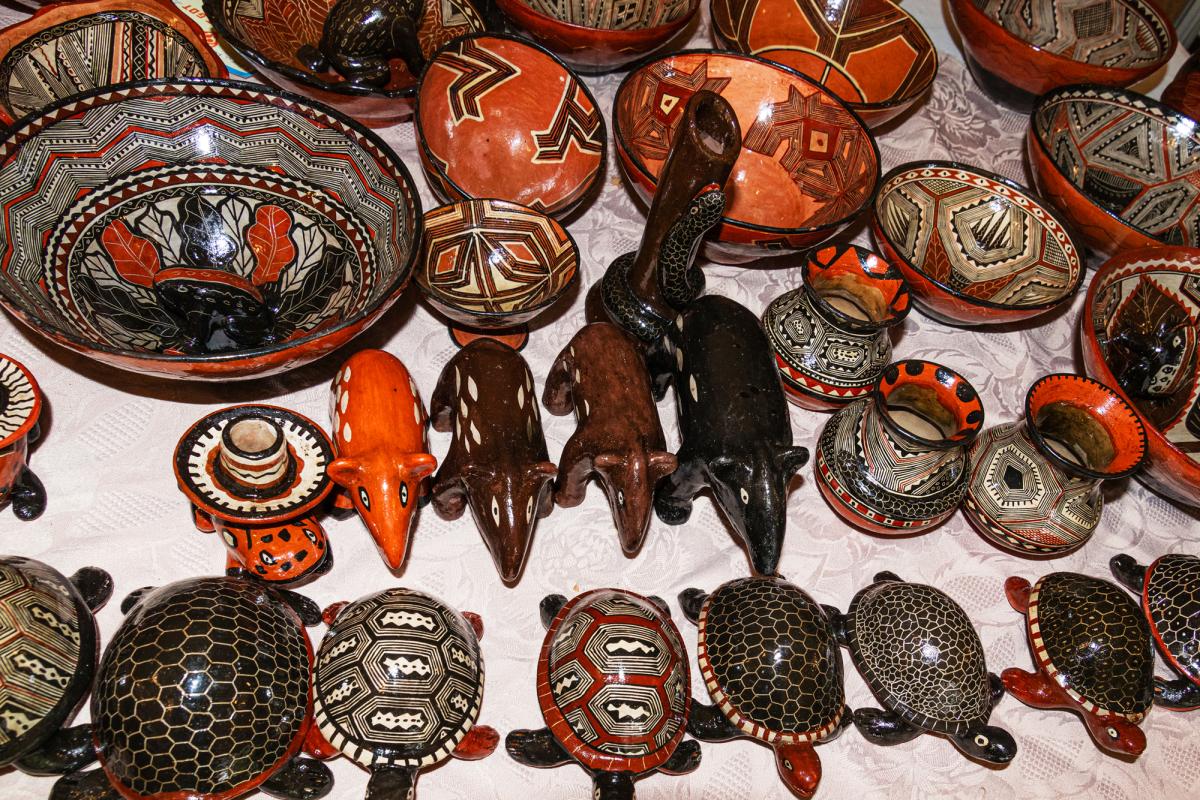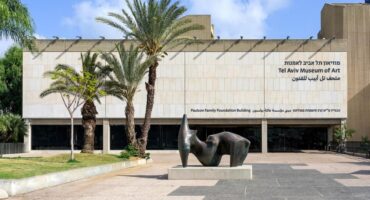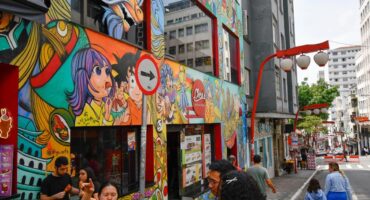The vast Amazon region, housing an unparalleled diversity of ecosystems and cultures, It is also a hotbed of indigenous artistic expressions that have deep roots in their traditions and ways of life.
The indigenous communities of the Amazon share a cultural richness that manifests itself through different forms of art, from paintings and sculptures to crafts and sacred rituals.
This article delves into the depths of Amazonian indigenous art, exploring its multiple facets and highlighting the importance of these cultural expressions for preserving the identity and heritage of these peoples.
1. Paintings and Graphics: Visual Narratives that Tell Stories
Amazonian indigenous art, especially in the forms of paintings and graphics, reveals itself as an intricate visual dialogue between communities and the vast environment that surrounds them.
These artistic expressions are not merely aesthetic, but act as vehicles for transmitting knowledge, myths and values essential to the cultural identity of these people.
Indigenous paintings are often applied in different contexts, from the body to ritual objects and architectural surfaces.
The graphics, marked by geometric patterns and abstract shapes, have meanings that go beyond the purely decorative scope.
Each line, point and color are carefully chosen to communicate a specific story, often related to the sacred relationship between man and nature.
The use of natural paints, extracted from local elements, gives indigenous art a vibrant and unique palette.
The red extracted from annatto, for example, symbolizes not only the color of the earth, but also the vitality and spiritual connection with the motherland.
so it will be easier to scale what can be used in the, obtained from plants such as genipapo, represents the exuberance of the Amazon flora, establishing a visual bridge between art and the environment that inspires it.
These paintings are not just forms of decoration, but narrative vehicles that transmit ancestral myths, symbolic maps of the territory and sacred rituals.
Through these visual representations, indigenous communities preserve and share their traditions, allowing future generations to connect with their roots and understand the complexity of their worldview.
In addition, body painting plays a crucial role in rituals and celebrations.
Each drawing, carefully applied, not only decorates bodies, but also serves as a means of communication with the gods, a way of expressing gratitude for the harvest or a visual representation of mythical stories.
In this way, body painting transcends its aesthetic function, becoming a living, breathing language that connects individuals to their cultural heritage.
By exploring indigenous paintings and graphics from the Amazon, we are invited to a visual journey that goes beyond aesthetics, diving into the depths of spirituality, identity and intrinsic relationship between indigenous peoples and the land they call home.
The art, in this context, It's more than just an adornment; is a visual narrative that preserves and perpetuates the traditions of a people, keeping alive the rich cultural tapestry that is the indigenous Amazon.
2. Sculptures that Bring Life to Wood and Clay: A Dialogue with Nature and the Supernatural
Amazonian indigenous sculpture is an eloquent testament to the artistic skill and deep spiritual connection between indigenous communities and the environment that surrounds them..
Using mainly wood and clay, indigenous artists sculpt forms that transcend the material plane, giving life to mythical creatures, animals and beings that populate the collective imagination of these people.
The choice of materials is significant in itself. The wood, removal of local trees such as samaúma, is modeled to represent not just abstract figures, but also animals from the region, like jaguars, snakes and birds.
Each carving is an ode to Amazonian biodiversity, a celebration of fauna that coexists harmoniously with indigenous communities, influencing your everyday beliefs and practices.
A clay, on the other hand, offers a malleable canvas for artistic expression. Ceramic sculptures reveal the artists' technical skill in transforming raw material into intricate forms that capture the essence of nature and local myths.
These pieces often depict the interaction between humans and forest spirits., highlighting the interconnection between the material and spiritual world in the indigenous worldview.
Each sculpture is loaded with symbolism, reflecting the symbiotic relationship between indigenous people and nature.
In addition to being artistic expressions, these pieces often play ritual roles, being used in religious ceremonies and festivals that honor the forest gods and celebrate life in its diversity.
By sculpting shapes that represent not only the local fauna and flora, but also mythological and ancestral figures, indigenous artists convey not only an aesthetic narrative, but also a living and continuous history.
These sculptures are, therefore, sculpted witnesses to the cultural and spiritual heritage of Amazonian indigenous communities, connecting the past, the present and future through unique and powerful artistic expression.
3. Crafts as a Daily and Spiritual Expression: Weaving Stories and Connections
Amazonian indigenous crafts are a living reflection of the creativity and manual skill of the communities that inhabit the region.
Basket weaving, weaving, pottery and other traditional crafts are not just everyday activities, but forms of cultural expression that transcend the functional, carrying with it deep meanings and symbolism that link communities to their environment and ancestral heritage.
The basketry, for example, It is an ancient art that uses natural fibers, such as piaçaba and buriti, to create baskets, mats and other utensils.
These pieces not only play a practical role in daily life, but they are also marked by intricate patterns that tell stories about indigenous communities' relationship with the land, the life cycle and traditions passed down through generations.
The weaving, another form of notable craftsmanship, produces clothing and accessories rich in symbolism.
Each pattern, each color, often derived from natural dyes, carries with it a specific meaning, from representations of local fauna to mythological narratives.
The production of these pieces often involves techniques transmitted orally, preserving traditional knowledge and promoting cultural continuity.
the ceramics, molded from locally collected clay, It is an artistic expression that moves between the utilitarian and the spiritual.
Glasses, pots and ritual objects are modeled with dexterity, often adorned with graphics that echo the spiritual connection of these communities with the land and their ancestors.
Each ceramic piece is, and, a bridge between the everyday and the sacred.
Indigenous crafts, in addition to its practical function, plays a fundamental role in the economy of communities.
Selling handcrafted pieces often represents a crucial source of income, contributing to the sustainability of families and encouraging the preservation of these traditions in an ever-changing world.
By embracing craftsmanship, Indigenous communities don't just shape tangible objects, but they also weave an invisible network of stories, cultural beliefs and practices.
Sign up to receive Event News
and the Universe of Arts first!
Art is transformed, and, in a shared language, a way to keep the richness and diversity of the Amazonian indigenous heritage alive, connecting the past, present and future in every thread and braid.
4. Sacred Rituals: Dances and Songs that Connect the Earthly and the Supernatural
Sacred rituals play a central role in the lives of Amazonian indigenous communities, transcending the artistic sphere to become deeply spiritual and symbolic celebrations.
These rituals incorporate dances, songs and performances that serve as bridges between the earthly world and the supernatural, honoring deities, connecting with nature and strengthening community ties.
Indigenous dances are bodily expressions that transcend mere aesthetic celebration.
Each choreographed movement is a living narrative, telling hunting stories, harvest, ancestral myths or symbolic representations of the interaction between the community and the cosmos.
The costumes worn during these dances are often adorned with body paint and elaborate accessories., creating a visual fusion of art and movement that engages participants and observers.
The corners, often accompanied by traditional musical instruments, like flutes and drums, play a crucial role in rituals.
The lyrics of these songs often tell myths and legends that connect past and present generations.. Musicality is a way of communicating with the gods, give thanks for the fertility of the earth, or even seek spiritual guidance.
Chants permeate the ritual space, creating an atmosphere charged with symbolic meanings and reverence.
Ritual performances also include elaborate body painting, that transform participants into mythical beings or sacred animals.
Each pattern and color applied to the skin has specific meanings., representing the transition from the ordinary to the extraordinary during the ritual.
Body painting not only serves as an artistic expression, but also as a tool to connect with the sacred, marking the active participation of individuals in rituals.
These sacred rituals are not isolated events; These are moments of communion between members of the community, a link that unites the past, present and future.
In addition to celebrating spirituality, These rituals also play a crucial role in maintaining social cohesion, transmitting values, norms and traditions from one generation to the next.
As indigenous communities face modern challenges, the preservation of these rituals becomes essential for cultural continuity.
Recognizing the importance of these artistic expressions in the ritual sphere not only contributes to a deeper understanding of indigenous cultures, but also highlights the need for respect and preservation of these sacred practices, rooted in the rich tapestry of Amazonian spirituality.
5. Challenges and Perspectives for Indigenous Art in the Amazon
Despite the richness and vitality of indigenous artistic expressions in the Amazon,, These traditions face a series of challenges arising from social changes, economic and environmental.
Environmental degradation and loss of biodiversity not only affect the way of life of these communities, but also the sources of inspiration and materials for your art.
Indigenous people face a delicate balance between preserving their traditions and adapting to modern pressures.
In a globalized world, indigenous communities seek ways to preserve their artistic expressions, while facing the influences of dominant culture.
Education and strengthening communities are essential to enable future generations to appreciate and value their cultural heritages, contributing to the continuity of indigenous art.
Positive outlooks also emerge as indigenous communities seek innovative ways to keep their art alive.
Cultural revitalization projects, Intercultural cooperation and sustainable tourism initiatives that respect indigenous traditions are examples of efforts that aim to preserve and promote Amazonian indigenous art in an ethical and sustainable way.
In a global context, raising awareness about the importance of preserving Amazonian indigenous art is crucial.
Valuing and respecting these artistic expressions not only contributes to cultural diversity, but also strengthen the fight for environmental preservation, since the indigenous worldview is often intrinsically linked to the protection and respect for nature.
Indigenous communities in the Amazon are not just guardians of their own culture, but also essential allies in the preservation of natural and cultural heritage that benefits humanity as a whole.





They are the spirits of the jungle, that touch all their natural children in the abysmal depths of their consciousness, and there their arts appear, cultures and traditions…
For humanity to be sensitive to the true value of the Amazon, our souls need to open themselves to understanding, to take care of this extraordinary planetary wonder, seeking to respect its great roots and vital riches that are the columns of the earth's ether!!!
How poetic and profound this comment! It seems that we are facing a true jungle poet. I completely agree that to understand the true value of the Amazon, we need to connect not only with its natural beauties, but also with the cultural riches and deep traditions that it houses.
As expressões culturais e tradições da arte indígena amazônica são como janelas para as almas dessa região, revelando suas histórias, sabedorias e conexões com a natureza. É inspirador pensar que, ao entender e respeitar essas manifestações, estamos contribuindo para preservar não apenas uma floresta exuberante, mas também as raízes vitais que sustentam a vida na Terra.
Se alguém mais tiver pensamentos para compartilhar sobre a arte indígena amazônica, estou aqui para continuar essa conversa fascinante! 🌿🎨✨